Laptops have seamlessly woven into the fabric of our daily lives, offering portability and convenience. But what happens when we crave more—more screens, more connectivity, more efficiency? Enter the unsung hero: the laptop docking station. In this article, we unravel the mysteries surrounding these compact devices. Whether you’re a tech enthusiast or a casual user, join us in demystifying what a laptop docking station is and why it’s becoming an essential tool for anyone looking to supercharge their laptop experience. Let’s dive in!
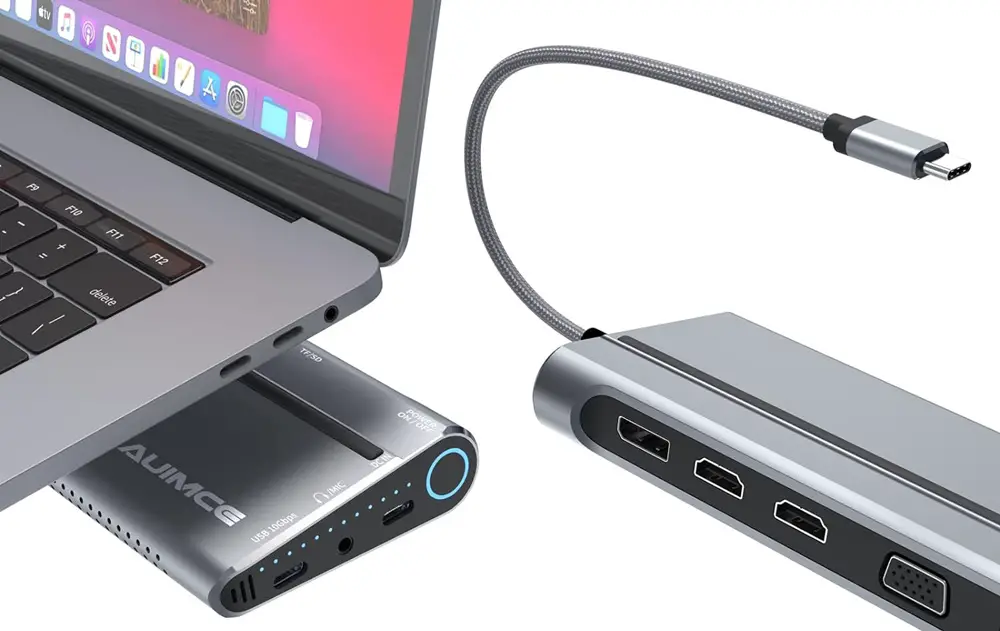
What Is a Laptop Docking Station?
Simply put, a laptop docking station is a game-changer for your laptop setup. It’s one of the must-have accessories for your laptop. It gives your laptop a power boost, turning it into a versatile command center. Think of it as a compact external hub with various ports—USB, HDMI, DisplayPort, and more.
This nifty device solves a common headache: the limited ports on your laptop. As laptops get slimmer, they often lose ports, making it a challenge to connect all your devices. The docking station swoops in to save the day, providing a one-stop solution for all your connectivity needs.
How Does It Work?
Connecting your laptop to a docking station is as easy as pie, and the beauty lies in its simplicity.
Here’s the lowdown: you use a single cable, typically USB-C or Thunderbolt, to link up your laptop and the docking station. This cable not only transfers data but also juices up your laptop and any devices connected to the docking station.
Once hooked up, the docking station becomes the control center. It takes over your laptop’s limited ports and opens the door to a world of possibilities. Need to hook up to a big screen? Done. Want to add multiple USB devices without the cable chaos? The docking station is here to help.
But what makes it truly smart is its ability to recognize connected devices instantly. Your laptop and the docking station work together seamlessly, treating external monitors, printers, and gadgets like they’re part of your laptop. No complicated setups—just plug and play.
Some docking stations go above and beyond. They can charge your laptop on the fly, zip through data transfers, and even support multiple external displays for the ultimate setup.
Key Features to Look For
Choosing the right laptop docking station is not a one-size-fits-all affair. Understanding the key features ensures you pick a docking station that aligns seamlessly with your needs. Let’s break down the essential elements:
1. Port Variety
Look for a docking station that offers a diverse array of ports. USB, HDMI, DisplayPort, Ethernet – having a mix ensures compatibility with various devices. This versatility allows you to connect monitors, printers, external drives, and other peripherals effortlessly.
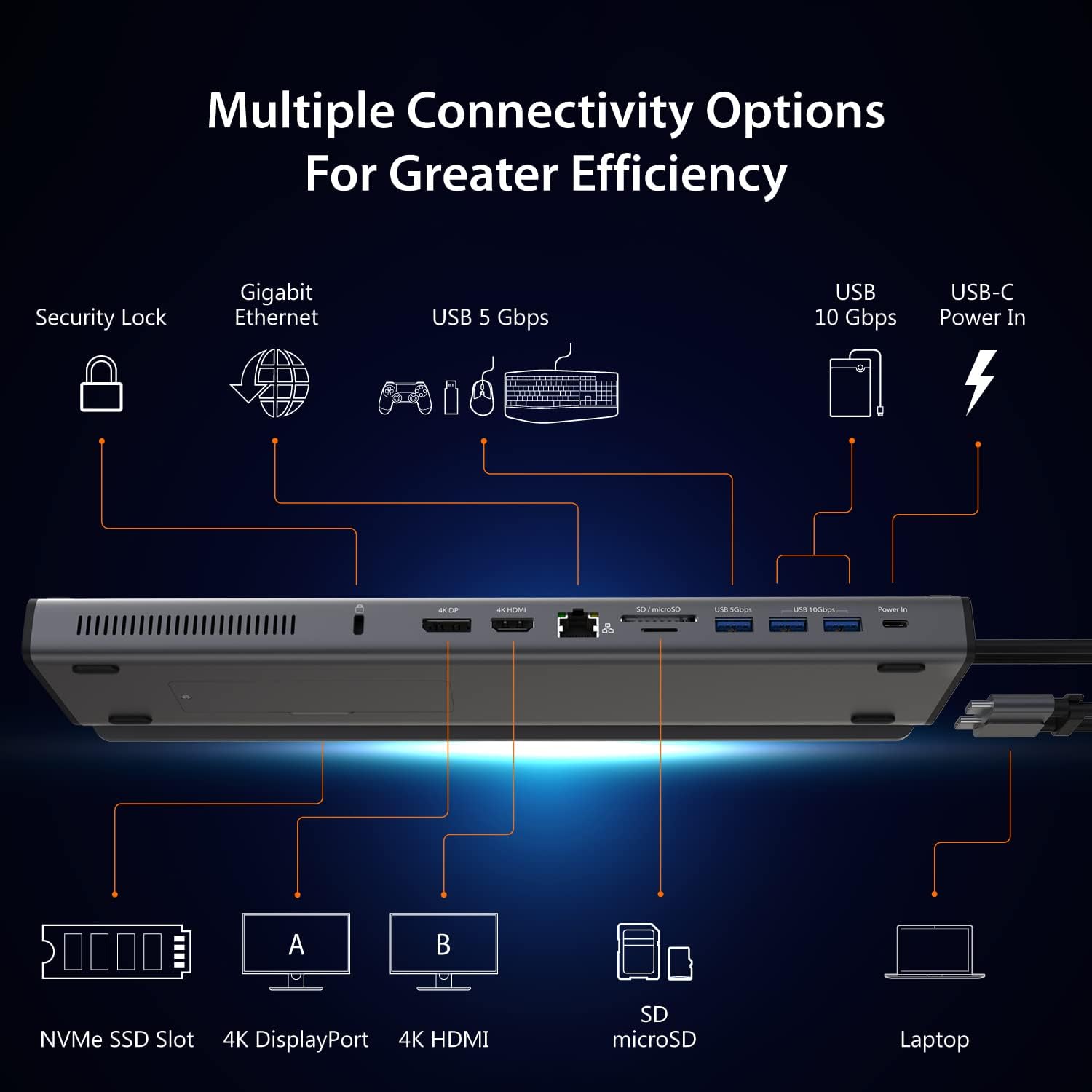
2. Compatibility
Ensure the docking station is compatible with your laptop’s make and model. While many docking stations are universal, some are designed for specific brands or models. Double-checking compatibility ensures a smooth integration with your laptop.
3. Power Delivery
Opt for a docking station that supports power delivery, especially if you have a power-hungry laptop. This feature allows the docking station to charge your laptop while in use, reducing cable clutter and ensuring your device stays juiced up.
4. Ease of Use
A good docking station should simplify, not complicate, your setup. Consider the ease of connection – a single cable connection is often preferred for its convenience. Also, look for user-friendly designs that don’t require advanced technical know-how.
5. Additional Features
Some docking stations come with extra bells and whistles. High-speed data transfer, audio jacks, and support for multiple external displays are valuable add-ons. Assess your specific needs to determine which additional features would enhance your computing experience.
6. Build Quality and Design
Pay attention to the build quality of the docking station. A sturdy, well-designed unit not only looks good on your desk but also ensures durability. A sleek design with efficient heat dissipation contributes to a reliable and long-lasting docking station.
Benefits of Using a Docking Station
Now that we’ve dissected what a docking station is and how it functions, let’s explore the myriad benefits that make it a must-have for anyone looking to supercharge their laptop setup.
1. Enhanced Connectivity
A laptop docking station expands the connectivity options of your laptop, turning it into a versatile hub. With additional ports like USB, HDMI, and Ethernet, you can seamlessly connect to a variety of devices such as external monitors, printers, keyboards, and more. Say goodbye to the limitations of your laptop’s built-in ports.
2. Streamlined Multitasking
Connect multiple peripherals simultaneously without the hassle of constantly plugging and unplugging cables. Whether you’re working on a complex project, managing multiple spreadsheets, or simply juggling between tasks, a docking station allows you to create a streamlined, clutter-free workspace for efficient multitasking.
3. Effortless Workstation Setup
Transform your laptop into a personalized workstation with a single connection. No more fumbling with cables or adjusting settings each time you switch between your home office and an on-the-go setup. The docking station remembers your preferences, making it a seamless transition from one workspace to another.
4. Cable Management
Tired of the cable chaos on your desk? A docking station helps in tidying up the mess. With a single cable connecting your laptop to the docking station, you can keep the rest of your cables organized and out of sight. It not only enhances the aesthetics of your workspace but also makes it easier to keep everything in order.
5. Ergonomic Benefits
Many docking stations support the use of external monitors and keyboards, allowing you to create a more ergonomic workstation. This can contribute to improved posture and reduced strain during long work sessions. The ability to adjust your setup to suit your preferences enhances comfort and overall well-being.
6. Portable Productivity
For those who are always on the move, a docking station provides a portable solution. Set up your workstation quickly and efficiently wherever you go. It’s a game-changer for professionals who need a consistent and productive workspace whether in a home office, co-working space, or client meetings.
Types of Laptop Docking Stations
Now that we’ve uncovered the benefits of using a docking station, let’s delve into the various types available in the market. Understanding the distinctions between these types ensures you choose a docking station that perfectly aligns with your specific requirements.
1. USB-C Docking Stations
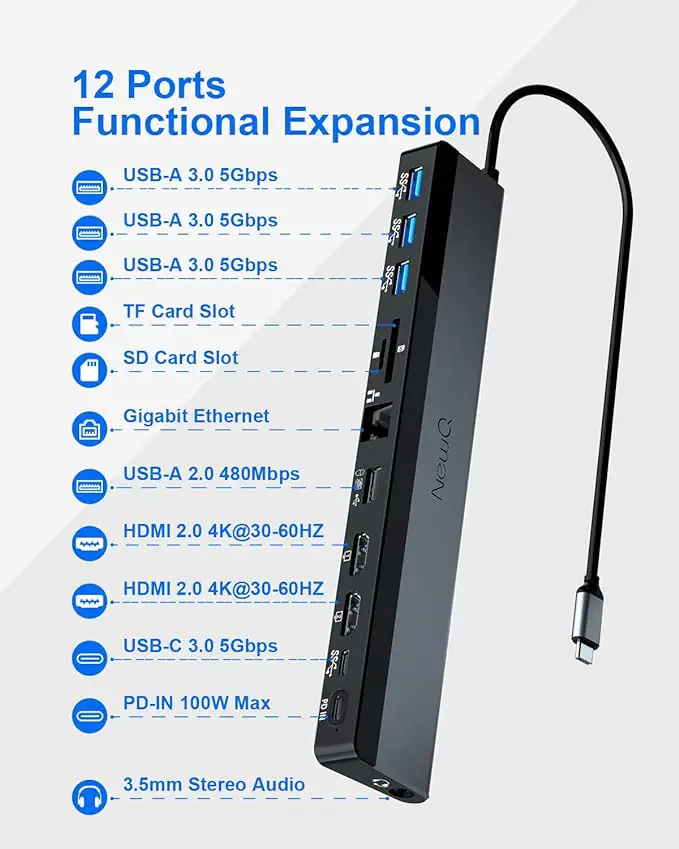
USB-C docking stations are popular for their universal compatibility. They utilize the USB-C port on your laptop, offering a range of connectivity options like USB-A, HDMI, Ethernet, and more. These docking stations are versatile and suitable for a broad spectrum of laptops, making them a go-to choice for many users.
Disclosure: As an Amazon Associate, we earn from qualifying purchases. When you purchase through links on our site, we may earn an affiliate commission at no extra cost to you.
2. Thunderbolt Docking Stations
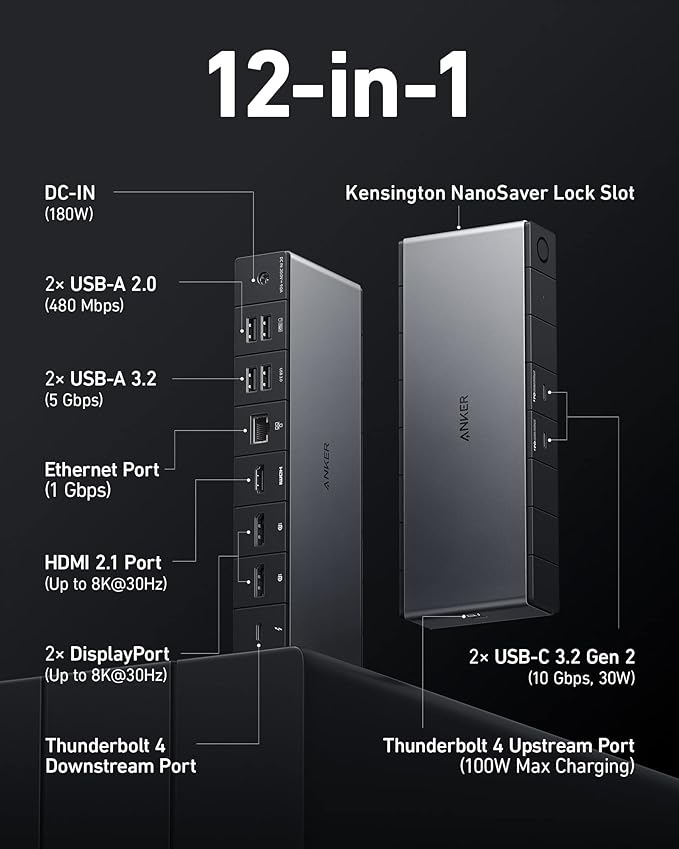
Thunderbolt docking stations are known for their lightning-fast data transfer speeds. If you have a laptop with Thunderbolt support, these docking stations can provide exceptional performance, making them ideal for tasks that demand high bandwidth, such as video editing or gaming.
Disclosure: As an Amazon Associate, we earn from qualifying purchases. When you purchase through links on our site, we may earn an affiliate commission at no extra cost to you.
3. Traditional Docking Stations
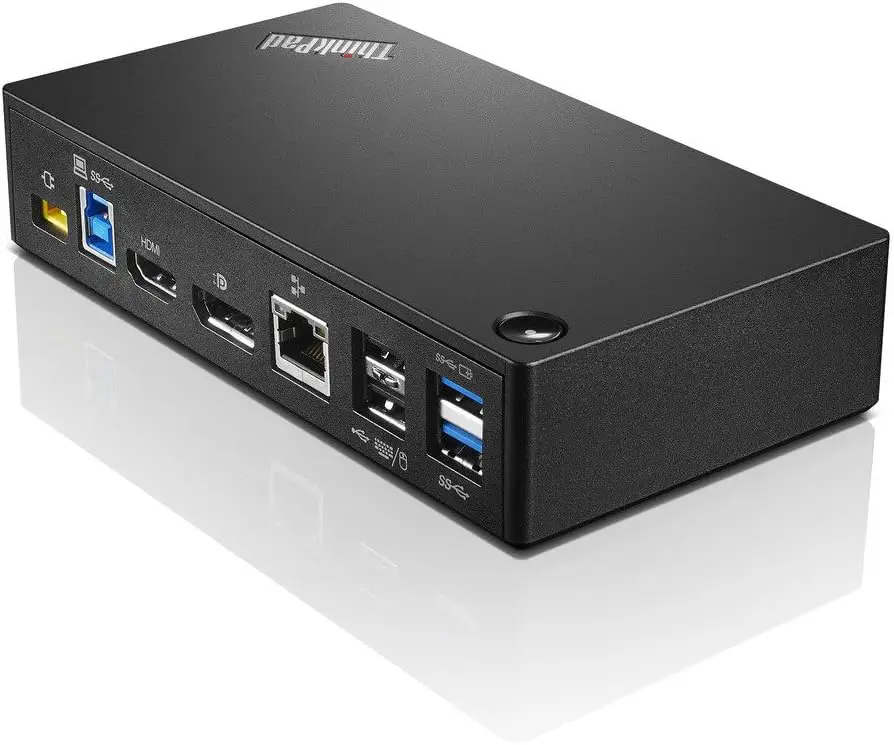
Traditional docking stations are designed for specific laptop models or brands. They often provide a dedicated docking port on the laptop, ensuring a secure and stable connection. While they may be less universal, they can offer additional features tailored to the laptop’s specifications.
Disclosure: As an Amazon Associate, we earn from qualifying purchases. When you purchase through links on our site, we may earn an affiliate commission at no extra cost to you.
4. Wireless Docking Stations
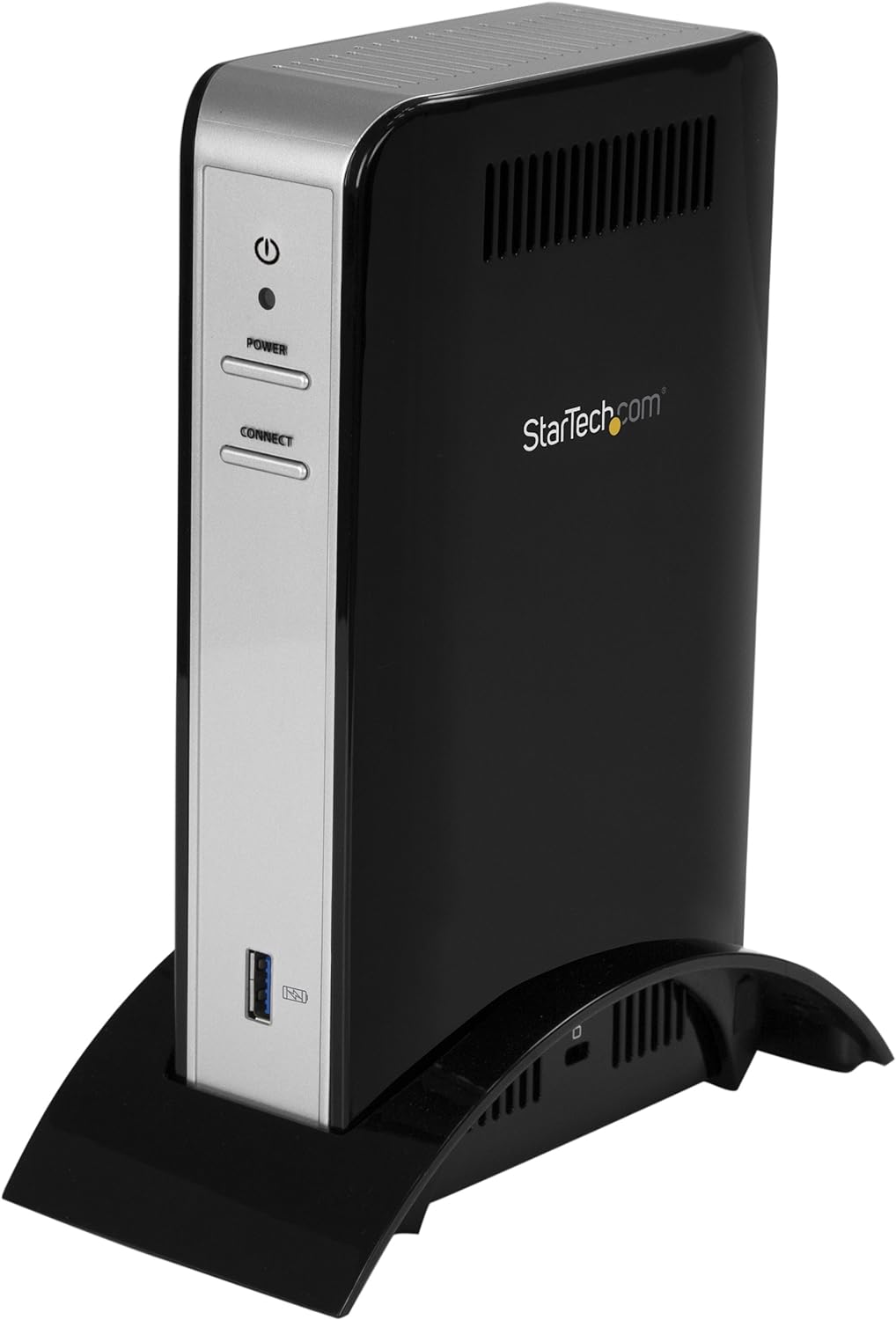
Embracing the future of connectivity, wireless docking stations eliminate the need for physical cables. These stations use technologies like WiGig or wireless USB to connect to your laptop, providing a clean and cable-free setup. While not as common as other types, wireless docking stations are gaining popularity for their convenience.
Disclosure: As an Amazon Associate, we earn from qualifying purchases. When you purchase through links on our site, we may earn an affiliate commission at no extra cost to you.
5. Hybrid Docking Stations
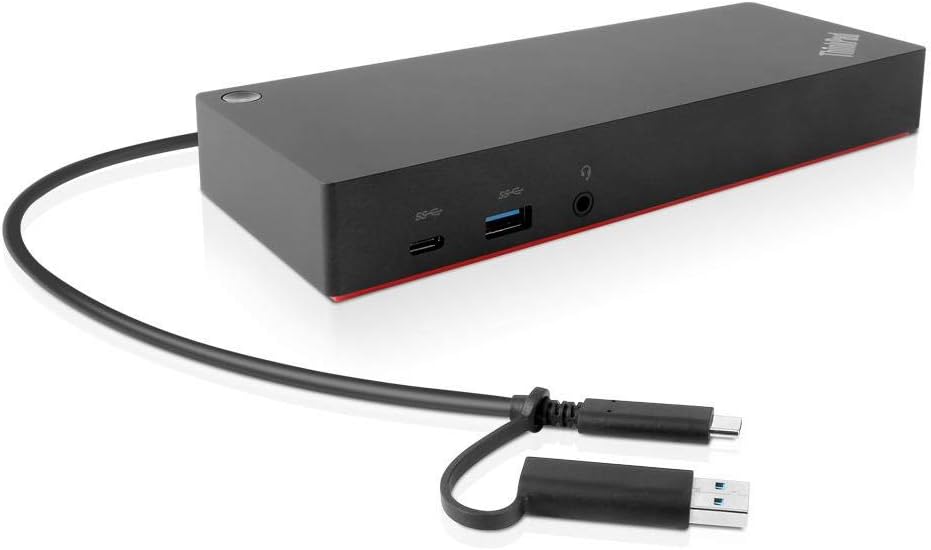
Hybrid docking stations combine the best of both worlds, often featuring both wired and wireless connectivity options. This flexibility allows users to choose the most suitable connection method based on their preferences and needs. It’s an excellent choice for those who value versatility.
Disclosure: As an Amazon Associate, we earn from qualifying purchases. When you purchase through links on our site, we may earn an affiliate commission at no extra cost to you.
Compatibility Issues and Solutions
While the prospect of enhancing your laptop’s capabilities with a docking station is exciting, ensuring compatibility is crucial to a smooth experience. Let’s explore potential compatibility issues and equip you with solutions to make the most out of your docking station.
1. Check Your Laptop’s Compatibility
Before diving into the world of docking stations, check your laptop’s specifications. Ensure it has the necessary ports or support for the type of docking station you intend to use. Some laptops may require specific adapters or firmware updates for optimal compatibility.
2. Universal vs. Brand-Specific Docking Stations
While universal docking stations are designed to work with a wide range of laptops, brand-specific docking stations are tailored for certain laptop models. Ensure the docking station you choose aligns with your laptop brand and model to avoid any connectivity hiccups.
3. Driver and Firmware Updates
Keep your laptop’s drivers and firmware up to date. Manufacturers often release updates to enhance compatibility with new devices, including docking stations. Check your laptop manufacturer’s website for the latest driver and firmware updates to ensure seamless integration.
4. Power Delivery Considerations
If your docking station supports power delivery, ensure your laptop is compatible with the specified power requirements. Some laptops may have different power input levels, and using an incompatible power supply could lead to issues or reduced charging efficiency.
5. USB Type-C Compatibility
If you’re opting for a USB-C docking station, confirm that your laptop supports USB-C connectivity. Additionally, check whether your laptop’s USB-C port supports data transfer, video output, and power delivery, as not all USB-C ports are created equal.
6. Operating System Compatibility
Verify that the docking station is compatible with your laptop’s operating system. While most docking stations are designed to work seamlessly with major operating systems like Windows, macOS, and Linux, it’s essential to double-check for any specific requirements or limitations.
7. Thunderbolt Compatibility
If you’re considering a Thunderbolt docking station, ensure your laptop has Thunderbolt support. Thunderbolt ports often have a distinctive lightning bolt symbol, and not all laptops come equipped with this high-speed interface.
Setting Up Your Laptop Docking Station
Now that you’ve selected the perfect docking station and ensured compatibility, let’s walk through the straightforward process of setting it up. With just a few steps, you’ll transform your laptop into a dynamic workstation.
1. Select an Ideal Location
Choose a convenient spot for your docking station. Ensure it’s within reach of your laptop, and the cable lengths are sufficient. This step might seem trivial, but it sets the stage for a clean and efficient workspace.
2. Connect the Docking Station to Power
Plug your docking station into a power source using the provided adapter. Some docking stations draw power from your laptop, while others have a dedicated power source. Follow the manufacturer’s guidelines to ensure the correct power setup.
3. Connect the Docking Station to Your Laptop
Use the designated cable (usually USB-C or Thunderbolt) to connect your laptop to the docking station. Ensure a secure connection, and if applicable, make use of any locking mechanisms provided by the docking station to keep the cable in place.
4. Connect External Monitors and Peripherals
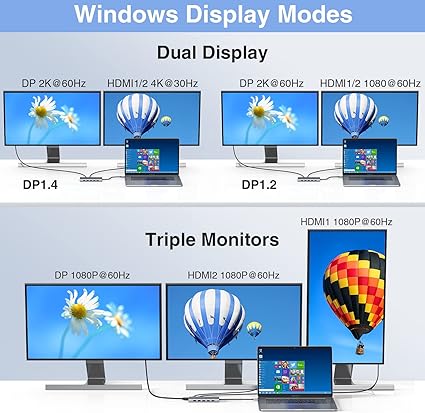
Now comes the fun part. Connect your external devices such as monitors, keyboards, mice, printers, and any other peripherals to the available ports on the docking station. Check for labeled ports to simplify the process.
5. Power On Your Laptop
Power on your laptop as you normally would. The docking station should recognize your laptop, and the connected devices should become operational. If your docking station supports power delivery, you might notice your laptop charging simultaneously.
6. Adjust Display Settings (If Necessary)
Depending on your setup, you may need to adjust display settings on your laptop. Go to your laptop’s display settings to configure the arrangement and orientation of connected monitors. This step ensures an optimal viewing experience.
7. Install Drivers (If Required)
Some docking stations may require specific drivers for optimal performance. Check the manufacturer’s website for any driver downloads and install them on your laptop. This step is particularly important for additional features or advanced functionality.
8. Test Your Setup
Confirm that all connected devices are functioning correctly. Test each peripheral and monitor to ensure they are recognized by your laptop. This step allows you to address any issues before settling into your newly configured workspace.
Real-World Applications
Now that your laptop and docking station are seamlessly connected, let’s explore practical scenarios where this dynamic duo can revolutionize your computing experience. From home offices to business trips, the versatility of a docking station extends far beyond the confines of a traditional setup.
1. Home Office Powerhouse
Transform your home office into a productivity haven by connecting your laptop to a docking station. Multiple monitors, a full-sized keyboard, and a high-performance mouse can turn your living space into a professional workspace. Say goodbye to the limitations of a single laptop screen and embrace a more expansive, multitasking-friendly setup.
2. On-the-Go Flexibility
For professionals frequently on the move, a docking station provides unparalleled flexibility. Set up your workstation swiftly in co-working spaces, hotel rooms, or client meetings. With a single connection, you can recreate your personalized workspace wherever your work takes you.
3. Presentations Made Easy
Docking stations simplify the process of delivering impactful presentations. Connect to a projector or an external display without the need for complicated cable setups. This ensures a smooth and professional presentation experience, allowing you to focus on your content rather than technical logistics.
Read also: 5 Best Laptops to Use for Presentations
4. Collaborative Work Environments
In collaborative work environments, docking stations facilitate seamless collaboration. Connect your laptop to shared peripherals like printers and scanners, making it easy for team members to plug in and contribute. This collaborative setup enhances teamwork and ensures that everyone has access to essential devices.
5. Gaming and Entertainment Hub
Gaming enthusiasts can take advantage of docking stations to create a dedicated gaming setup. Connect to high-resolution monitors, gaming peripherals, and additional accessories for an immersive gaming experience. Switch effortlessly between work and play by connecting and disconnecting your laptop with ease.
6. Education and Learning Spaces
Students and educators can benefit from docking stations in learning environments. Connect laptops to larger displays for presentations, link up to educational peripherals, and create an interactive and engaging classroom or study setup. The versatility of docking stations adapts to various educational needs.
7. Ergonomic Workstations
Prioritize your well-being by creating an ergonomic workstation with the help of a docking station. Position your laptop at eye level, use an external keyboard and mouse, and set up multiple monitors to reduce strain during extended work sessions. A comfortable and ergonomic setup contributes to a healthier and more enjoyable work experience.
Final Thoughts
Docking stations are your laptop’s best ally, offering seamless connectivity and versatile setups. From home offices to on-the-go productivity, these compact devices redefine how we work and play. Remember, the right docking station is the key to unlocking your laptop’s full potential—streamline your workspace, boost productivity, and enjoy a hassle-free computing experience. Happy connecting!
Disclosure: As an Amazon Associate, we earn from qualifying purchases. When you purchase through links on our site, we may earn an affiliate commission at no extra cost to you.
